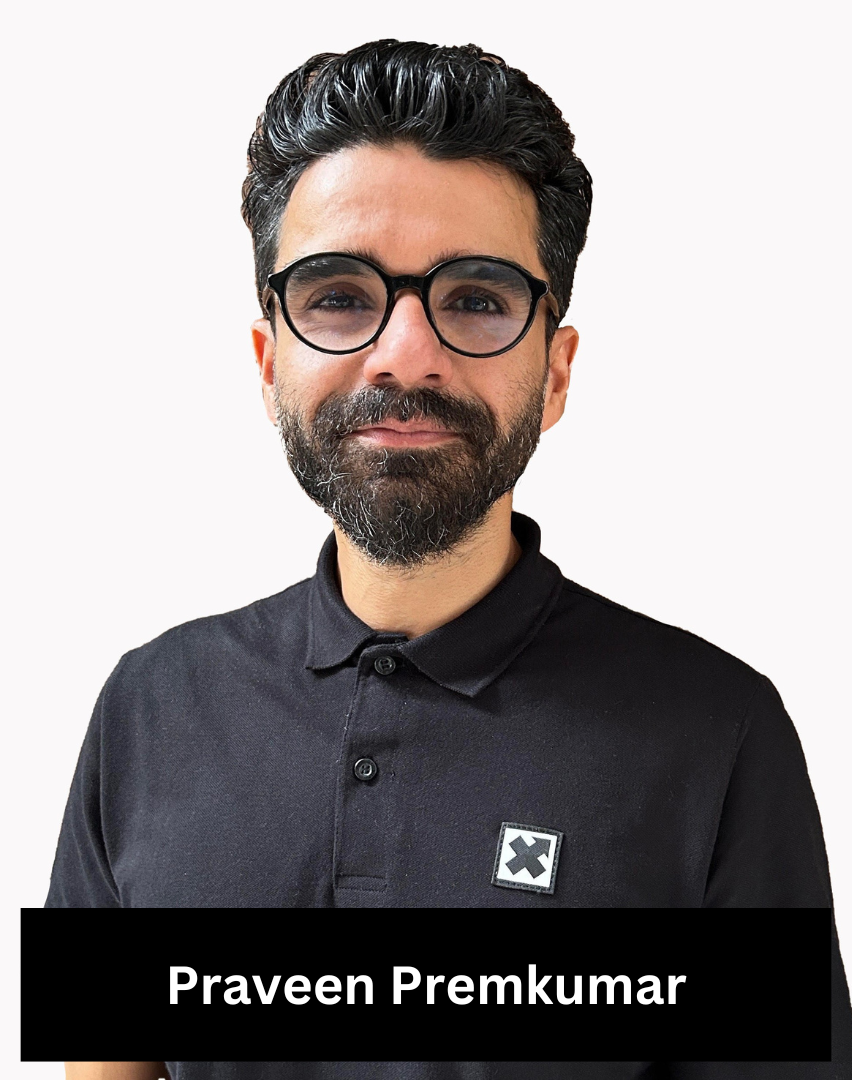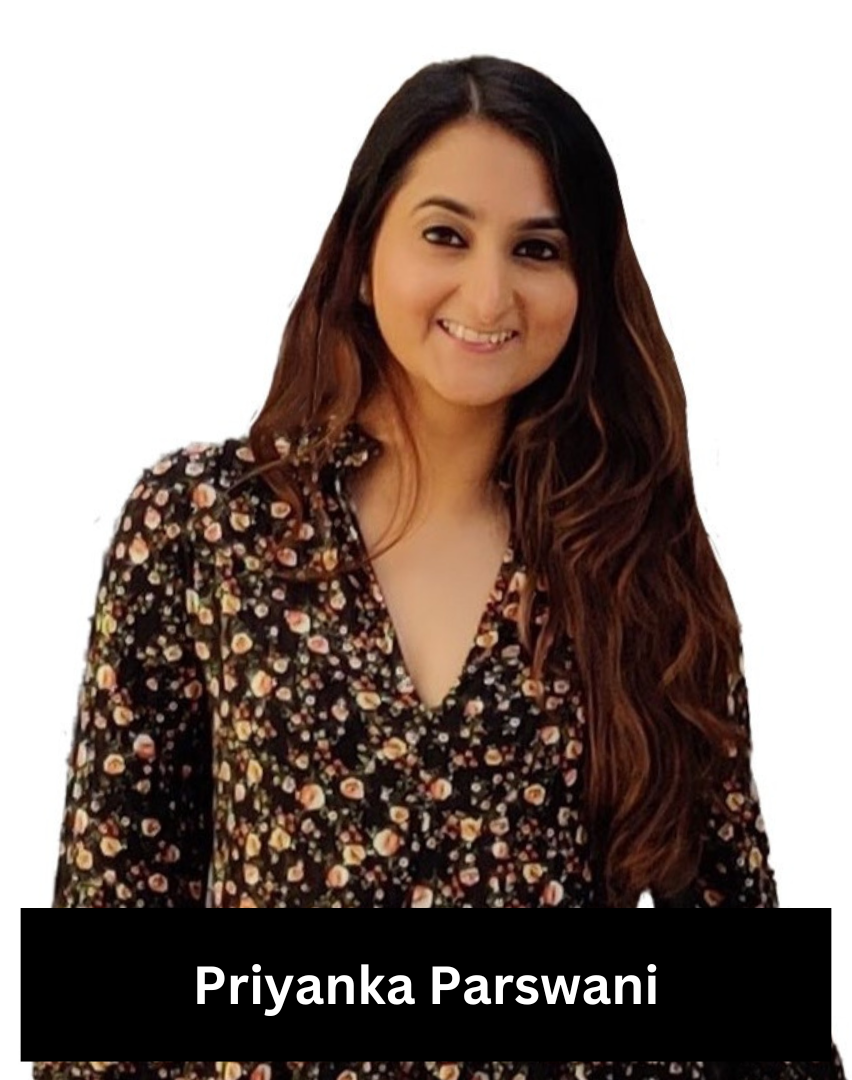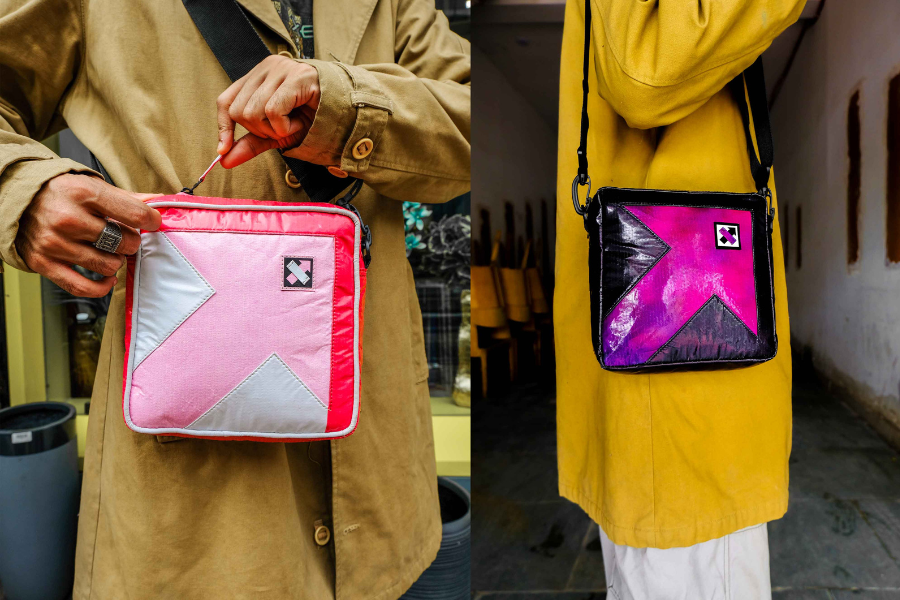‘There is a need for sustainable practices in the OOH industry’
By Aayush Mohanan - August 16, 2023
Media4Growth, caught up with Praveen Premkumar and Priyanka Parswani, Co-Founders, NO MORE, a company advocating sustainability with its bags – made from billboards.
NO MORE, a a bags and accessories company recently launched its “Billboard Flex” collection – crossbody sling bags that are produced from upcycled billboard flexes.
Excerpts from an interview with Aayush Mohanan.
 1. Tell us about the inception of NO MORE and what was the goal with which you set it up?
1. Tell us about the inception of NO MORE and what was the goal with which you set it up?
NO MORE primarily came from the thought that our planet is unique and if we do not take care of our environment, there will be no more of the planet tomorrow. And that was the thought that sparked the idea of NO MORE. In most garment and accessories factories across the country, there are leftovers, excesses, rejects, discards, raw materials that either lie idle for months or it is eventually sold by the kilo. We have tied up with a few garment and accessories factories who provide us with these excess raw materials.
Additionally, we have tied up with a harness factory wherein we get cut pieces of harnesses and also use seatbelts from cars. The reason we use them is because the material is strong and can be used to make webbings and shoulder belts for our bags. We are driven by sustainable practices and as such, our products are packaged is made of water-soluble tapioca and the outer cover is made from discarded (and cleaned) cement covers.
 We believe each individual is unique, much like our planet. If no two individuals are the same, why should their choices be? Hence, every product has a distinctive element and no two NO MORE products are ever the same.
We believe each individual is unique, much like our planet. If no two individuals are the same, why should their choices be? Hence, every product has a distinctive element and no two NO MORE products are ever the same.
2. What led to the idea of using discarded billboard as raw material?
While flex used for billboards are usually discarded and they are harmful as they do not disintegrate or biodegrade, as the material is durable, it made perfect sense to upcycle them into bags and accessories - reducing the harm it would have otherwise caused to the planet.
We started selling about two and a half months ago. However, the entire process of putting the brand together, getting the workshop and raw materials, and eventually getting the products ready took us about 10 months.
3. How do you acquire materials for the process? Do you have any tie ups with media owners or regulatory bodies?
I (Praveen), am part of a CII (Confederation of Indian Industries) and I’m also the head of climate change for Young Indians (YI) and the networks I established in these circles, helped me get in touch with the right people. On average, we are able to produce at least 20-30 bags out of a single hoarding, but it also depends on the size of the hoarding and the product. If we were to make small bags, we can produce as many 20-25 but with bigger items, that could come down to 10. I can also use parts of the bag as flex, parts of the bag as my regular raw materials.

4. In your view, does the OOH industry need to instil more sustainable practices with respect to the materials used for billboards?
Absolutely, I do. While it is a big industry and is not going away anytime soon, there is a time-sensitive need to adopt more sustainable practices in the OOH industry. For example, it should eventually become the norm to upcycle billboard flexes and made into shopping bags for retail stores.
5. How do you think NO MORE will create awareness of sustainability among the youth population?
Most of the people who have bought back from NO MORE are all in the 27-28 and above age group, and that’s our target audience, because they are perhaps more serious about sustainability. And sustainability is not cheap – there are a lot of backend processes involved, from sourcing to design and eventually production and these intricacies will easily resonate with a more mature audience. That doesn’t mean that those younger than 25 aren’t environmentally conscious, but for them it’s a choice between an expensive sustainable brand and a cheaper fast fashion brand. For context, it takes about 2,000 liters of water to grow enough cotton to make one round neck plain t-shirt!
While building a brand and its customer base is vital, our aim is to educate and spread awareness about sustainability.

